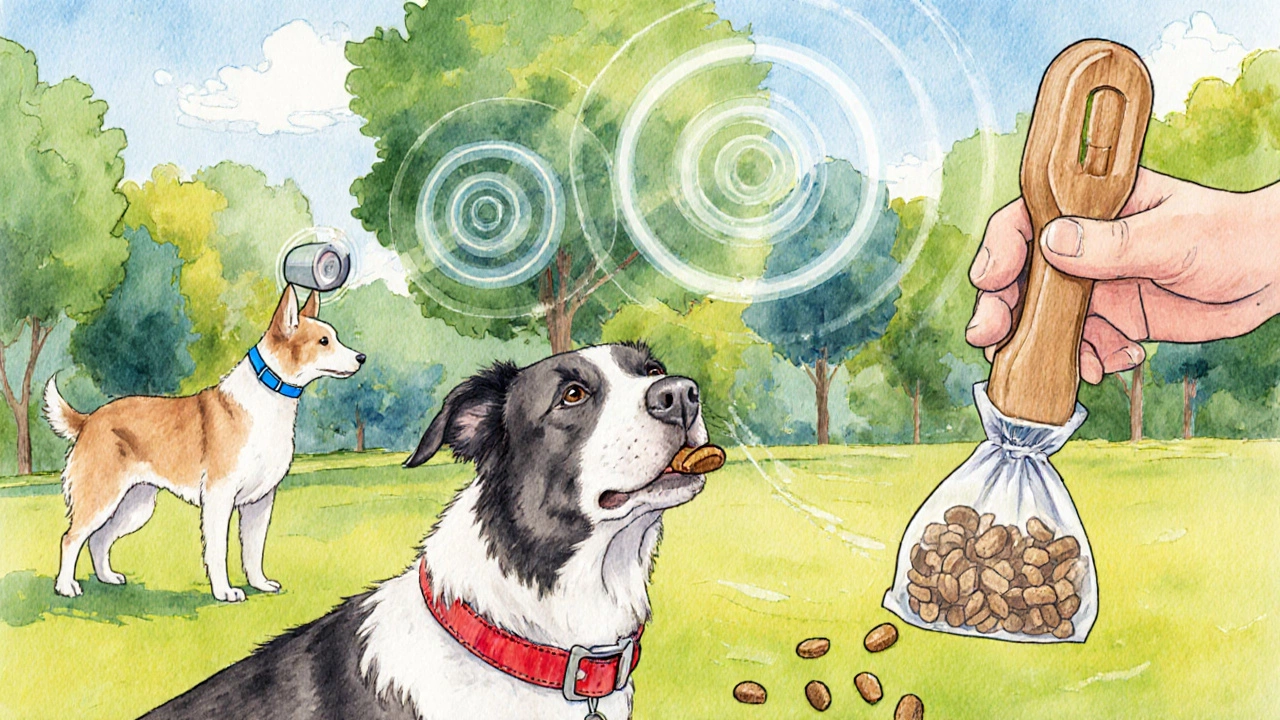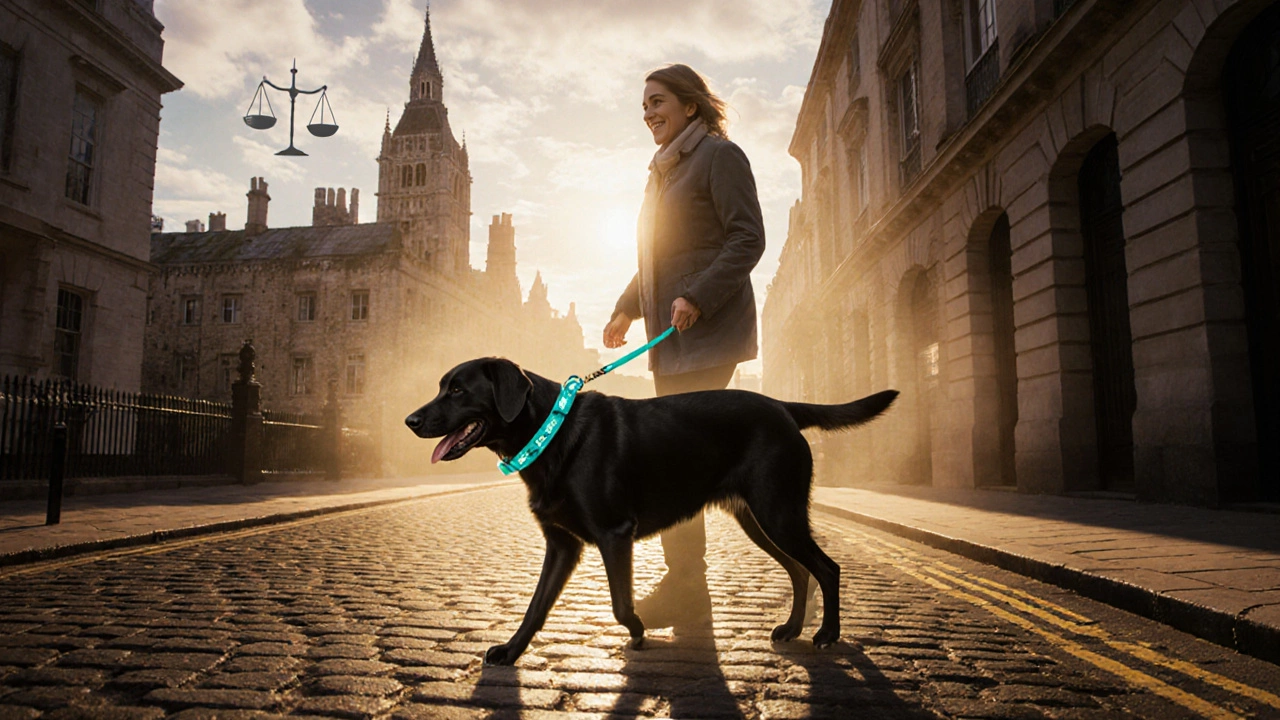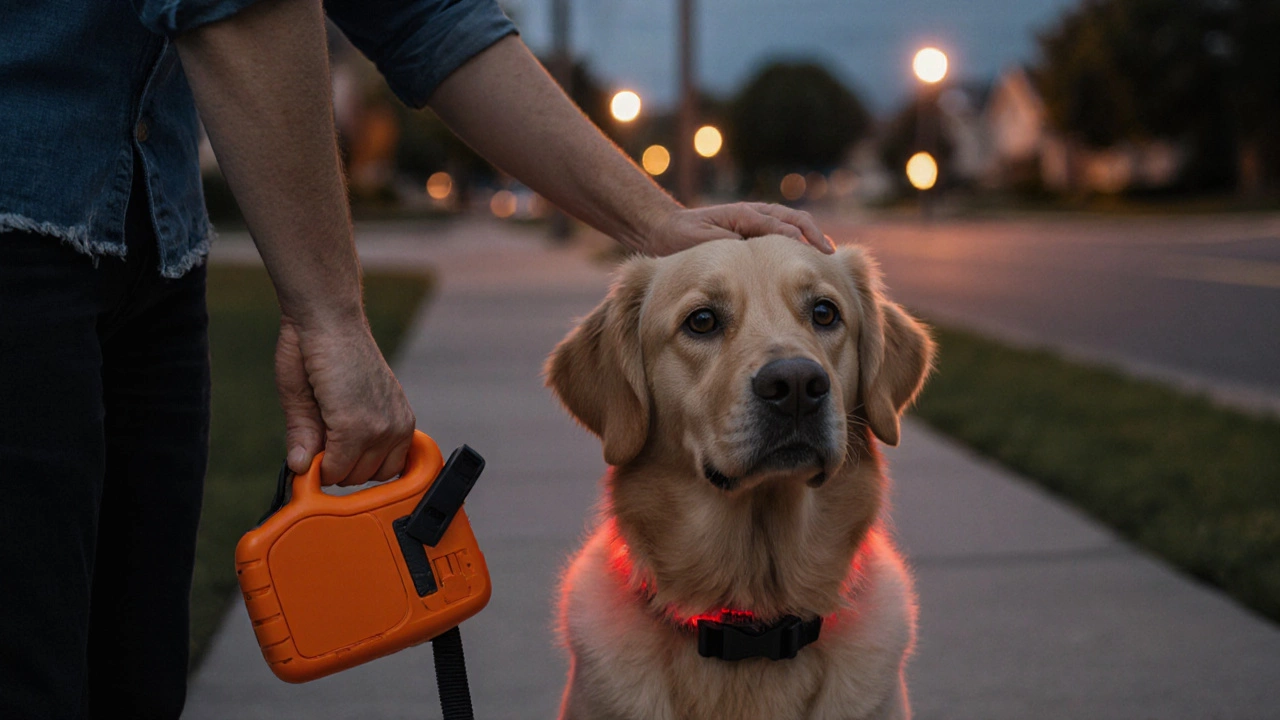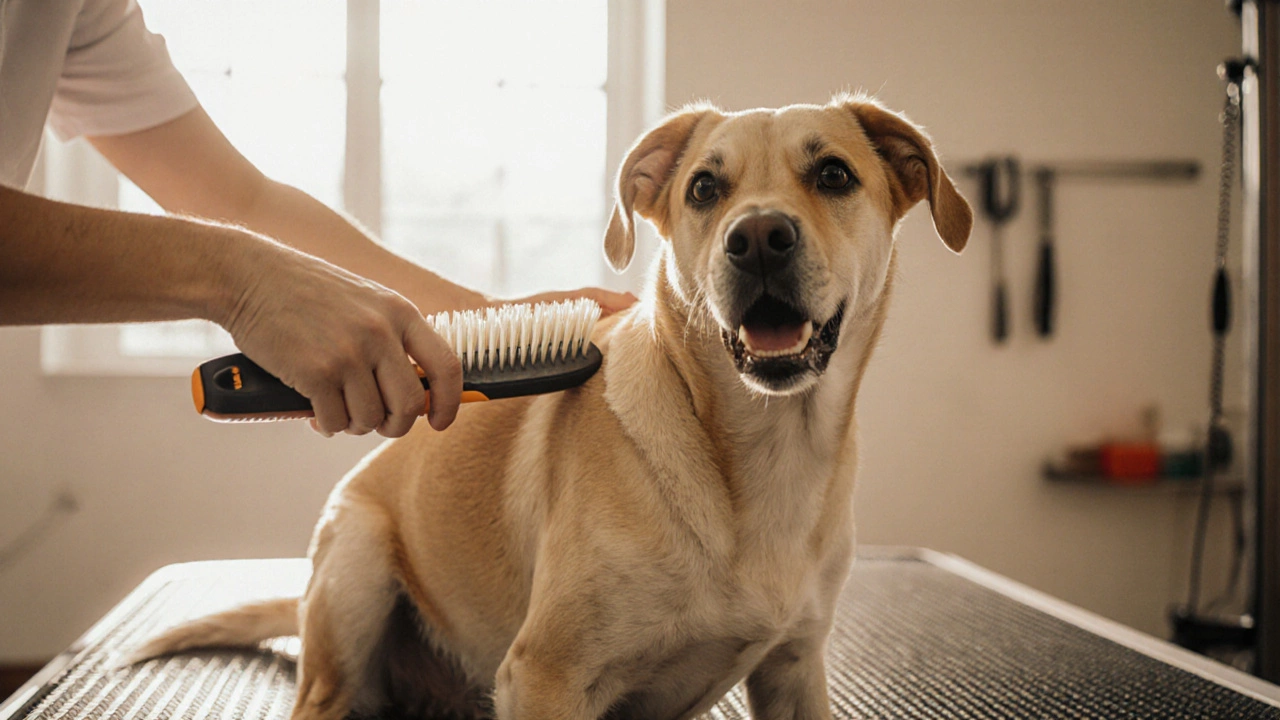Humane Collar Selector Tool
Choose Your Dog's Traits
Select characteristics to find the best humane alternative for your dog
Your Recommended Alternatives
Important Considerations
Always introduce any collar slowly with positive reinforcement. Never use it as a substitute for training.
When a pup starts pulling, barking, or ignoring recall, many owners instinctively reach for the most obvious tool - a shock collar. The jolt feels like a quick fix, but it also raises ethical questions and can damage trust between you and your dog. Fortunately, there are several humane dog collar options that keep training effective without the pain.
What a Shock Collar Actually Does
Shock collar is a remote‑controlled device that delivers an electrical pulse to a dog's neck when a trigger is activated. The bite is meant to startle the animal and discourage unwanted behavior.
Most modern shock collars let you adjust the intensity, but even the lowest setting can cause stress. Studies from the University of Queensland in 2023 showed that dogs exposed to electric stimuli displayed higher cortisol levels - a stress hormone - for up to 48 hours after a single correction. That lingering anxiety can erode the bond you’ve built through walks, play, and treats.
Why Look for a No‑Shock Solution?
- Preserves trust: Dogs learn to associate you with safety, not fear.
- Reduces risk of aggression: A frightened dog may redirect its anxiety toward other animals or people.
- Legal landscape: Several EU countries, including the UK, have tightened regulations on electronic training devices.
- Long‑term effectiveness: Positive reinforcement builds reliable responses that stick even when the collar is removed.
Top Humane Alternatives
Below are the most popular no‑shock tools, how they work, and when they shine.
1. Vibration Collars
Vibration collar is a wearable that emits a gentle buzz instead of an electric shock. The vibration serves as a sensory cue that the dog can quickly understand.
Owners love the subtlety: a light buzz is less likely to startle a nervous dog and can be paired with spoken commands for a clear association.
2. Ultrasonic Collars
These devices emit a high‑frequency sound that humans can’t hear but dogs can. The tone is uncomfortable enough to interrupt a behavior, yet it doesn’t involve any physical contact.
Best for dogs that respond well to sound cues and for environments where visual cues might get lost, such as a busy park.
3. Head Collars (Gentle Leaders)
Unlike neck‑based devices, a head collar gently redirects a dog’s nose when they pull. The pressure is applied near the muzzle, giving the handler fine control without any electric or auditory stimulus.
Perfect for strong pullers or dogs that tend to lunge. It also mimics the natural steering mechanism of a horse’s halter, making it intuitive for many canines.
4. Training Clickers + Treats
The oldest and most proven method still works wonders. A clicker marks the exact moment a desired behavior occurs, followed instantly by a treat. The dog learns that the click equals a reward.
While not a collar, many owners pair a clicker with a lightweight, non‑static collar for identification. The system relies purely on positive reinforcement and avoids any negative stimulus.
How to Choose the Right Alternative for Your Dog
Pick a tool that matches your dog’s temperament, the training goal, and your own comfort level.
- High‑energy pullers: Try a head collar or a vibration collar paired with consistent leash work.
- Noise‑sensitive dogs: A vibration collar is safer than ultrasonic.
- Food‑motivated pups: Clicker training can be the most rewarding.
- Multi‑dog households: Choose a collar with a unique vibration pattern or tone to avoid confusion.

Comparison Table
| Device | Stimulus Type | Effectiveness (basic obedience) | Potential Harm | Best For |
|---|---|---|---|---|
| Shock collar | Electrical pulse | 90% (short‑term) | Stress, fear, possible aggression | Extreme off‑lead recall (not recommended) |
| Vibration collar | Gentle buzz | 75% (with consistent cue) | Minimal; rare skin irritation | Dogs that respond to tactile cues |
| Ultrasonic collar | High‑frequency sound | 70% (if dog is sound‑responsive) | Ear discomfort if overused | Outdoor training in noisy areas |
| Head collar | Physical redirection | 85% (with leash work) | Rare neck strain if mis‑fitted | Strong pullers, leash‑training |
| Clicker + treats | Positive reinforcement | 95% (long‑term) | None (except over‑feeding) | All dogs; especially food‑motivated |
Step‑by‑Step Guide to Switching from a Shock Collar
- Assess the current situation. Note which commands the dog obeys under shock and which trigger the correction.
- Choose a humane alternative. Consider the comparison table and your dog’s personality.
- Introduce the new collar without activation. Let the dog wear it for short periods to get used to the feel.
- Pair the collar with a clear cue. For a vibration collar, use a word like “watch” before the buzz.
- Reinforce with treats or praise. Reward the moment the dog stops the unwanted behavior.
- Gradually phase out the device. As the dog learns the command, reduce reliance on the buzz or click.
- Monitor stress signals. Look for yawning, lip licking, or a tucked tail - signs the dog may still be anxious.
Patience is key. Most owners see noticeable improvement within two weeks when they stay consistent.
Common Pitfalls and How to Avoid Them
- Inconsistent timing. Whether you’re using a buzz or a click, the cue must happen the instant the behavior stops.
- Over‑reliance on the device. Treat the collar as a prompt, not a crutch. The ultimate goal is to respond to a voice command alone.
- Wrong fit. A collar that’s too tight can cause skin irritation; too loose and the vibration won’t be felt.
- Skipping positive reinforcement. Punishment‑only methods rarely lead to lasting change. Always follow a correction with a reward.
Real‑World Success Stories
Emily from Bristol swapped her 12‑year‑old shock collar for a gentle leader when her Labrador, Max, started showing signs of anxiety during car rides. Within three weeks, Max sat calmly on command, and the car trips turned from stressful to enjoyable.
Tom, a trainer in Manchester, uses vibration collars for a high‑energy Border Collie named Bella during agility practice. The buzz signals a missed obstacle, and Bella quickly learns to correct herself without the need for harsh shocks.

Legal and Ethical Landscape in the UK
Since the Animal Welfare (Sentencing) Act 2024, the use of aversive electric devices on companion animals is classified as a misdemeanor if proven to cause unnecessary suffering. While enforcement varies, many local councils now require proof of training competency before issuing a shock collar permit.
Choosing a humane alternative not only keeps you on the right side of the law but also aligns with the growing public sentiment that pets deserve compassionate care.
Quick Checklist: Is Your Current Collar Humane?
- Does it deliver a physical pain stimulus? - If yes, replace it.
- Can you adjust intensity to a barely perceptible level? - If you need the lowest setting, it’s still aversive.
- Do you rely on it for everyday obedience? - If yes, consider positive‑reinforcement tools.
- Is the dog showing signs of stress around the collar? - If yes, switch immediately.
Bottom Line
Shock collars may provide a quick fix, but they carry hidden costs to your dog's well‑being and your relationship. The market now offers a suite of humane alternatives - vibration, ultrasonic, head collars, and clicker training - that deliver consistent results without the pain.
Pick the tool that matches your dog’s needs, practice patience, and watch the bond grow stronger.
Frequently Asked Questions
Are vibration collars safe for puppies?
Yes, as long as the device is set to the lowest intensity and fitted snugly but comfortably. Puppies are more sensitive, so start with a gentle buzz and pair it with treats.
Can an ultrasonic collar replace a shock collar for recall training?
It can work for dogs that respond well to sound cues. However, recall is best reinforced with a verbal cue and a high‑value reward. The ultrasonic tone serves as a prompt, not a standalone solution.
Do head collars cause neck injuries?
When fitted correctly, head collars apply pressure near the muzzle, not the neck. The risk of injury is low, but an ill‑fitted collar can cause chafing. Always follow the manufacturer’s sizing guide.
How long should I use a humane collar before removing it?
Aim for 2-4 weeks of consistent training. Once the dog reliably obeys the command without the cue, you can phase the collar out and rely solely on verbal cues and treats.
Is it legal to own a shock collar in the UK?
Shock collars are not illegal per se, but using them in a way that causes unnecessary suffering can lead to prosecution under the Animal Welfare Act. Many local councils now require proof of competency before allowing their sale.









